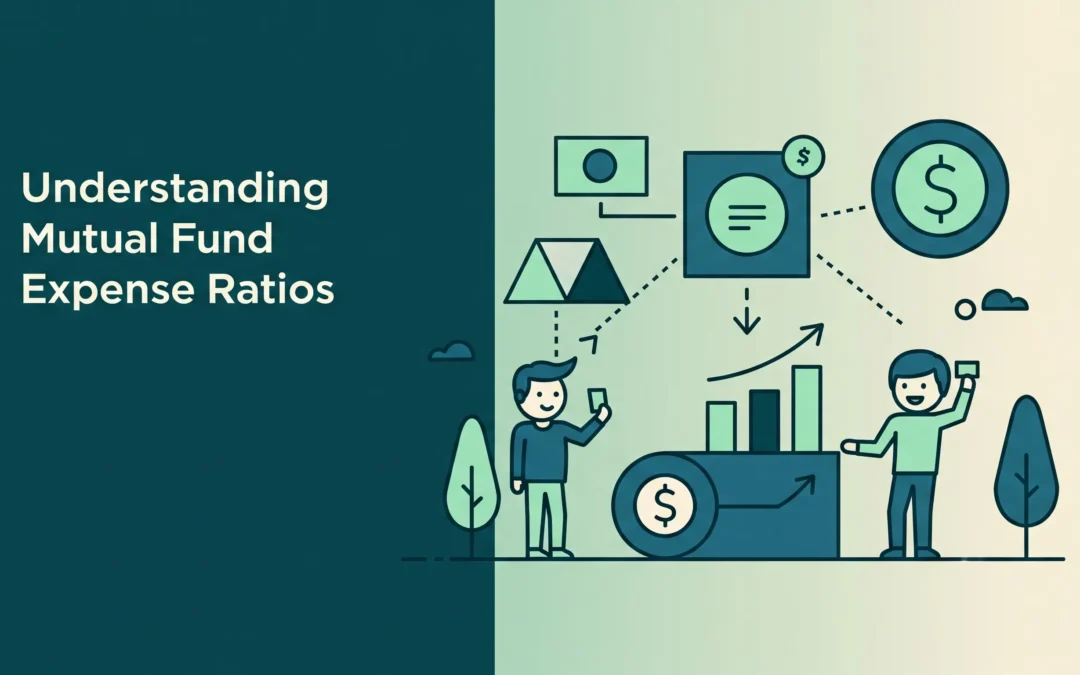First-time investors are drawn to mutual funds because they are among the easiest and most efficient ways to increase wealth.
But even though a lot of investors concentrate on fund performance and returns, one crucial aspect is frequently missed: the expense ratio. How much of your investment truly benefits you is greatly influenced by this seemingly insignificant percentage. Over time, even a small variation in expense ratios can have a big impact on your total returns. It stands for the yearly fee a fund charges to look after your money.
This post will explain the true meaning of the mutual fund expense ratio, its significance, and how astute investors can use it to select cost-effective funds without sacrificing performance.
What Is a Mutual Fund Expense Ratio?
The mutual fund expense ratio is the annual fee that investors pay to a mutual fund to cover fund management costs. It is automatically subtracted from the fund’s returns and is expressed as a percentage of the average assets under management (AUM).
Example:
Investing ₹1,000,000 in a fund with a 1% expense ratio will result in an annual fee of ₹10,000 (not ₹1,000). You don’t pay this fee directly because it is already deducted from your returns, as it is incorporated into the fund’s performance.
Expense Ratio (%) = (Total Operating Expenses / Average AUM) × 100
Example:
Fund Details:
- Fund Name: ABC Large Cap Fund (Regular Plan)
- Total Annual Operating Expenses: ₹15 crore
- Average Assets Under Management (AUM): ₹1,000 crore
- Expense Ratio: (15 crore/1,000crore) *100 = 1.5%
Types of Expense Ratios in Mutual Funds
1. Regular Plan vs. Direct Plan
Direct Plan: There is no broker or middleman involved; you invest directly with the mutual fund company. As a result, its expense ratio is lower.
Regular Plan: Contains platforms or distributors such as Groww, Zerodha, etc. Because commissions are paid out, these plans have a higher expense ratio.
2. Active Funds vs. Passive Funds
Active Funds: Under the direction of qualified fund managers who use strategy and research to try to outperform the market. Their expense ratios are higher.
Passive funds usually have lower expense ratios because they track market indices like the Sensex or Nifty 50 with minimal active management.
3. Debt vs. Equity Funds
Equity funds: Make stock investments and necessitate thorough research, which results in moderate to high expense ratios.
Debt funds: Invest in fixed-income securities, such as bonds, which require less management and have lower expense ratios.
| Category | Sub-Type | Expense Ratio Range | Reason |
| Investment Mode | Direct Plan | 0.3% – 1.0% | No commission to intermediaries |
| Regular Plan | 1.0% – 2.5% | Includes distributor/broker commissions | |
| Fund Management | Passive Fund | 0.05% – 1.0% | Index tracking, less management. |
| Active Fund | 1.0% – 2.5% | Professional management, frequent trading | |
| Asset Class | Equity Fund | 1.0% – 2.5% | Higher research and transaction costs |
| Debt Fund | 0.5% – 1.5% | Low volatility, fewer adjustments needed |
How does Expense Ratio Affect your Investment?
- Diminishes Net Returns: Suppose a mutual fund generates a 12% gross annual return but charges a 2% expense ratio. Your real return after fees will be around 10%, not 12%.
- Compounding Loss: Every rupee lost to fees lowers your compounding power for upcoming years, in addition to your return for this year.
- Better Performance ≠ , Higher Cost: A higher expense ratio does not guarantee better returns. In fact, low-cost index funds often outperform actively managed, high-cost funds over the long term.
Example:
Suppose you invest ₹5,00,000 in two mutual funds—one with a 1.5% expense ratio and the other with 0.5%. Assume a growth rate of both funds is at a gross rate of 10% annually before fees.
| Particulars | Fund A (1.5% ER) | Fund B (0.5% ER) |
| Initial Investment | ₹5,00,000 | ₹5,00,000 |
| Annual Return (Gross) | 10% | 10% |
| Net Return After Fees | 8.5% | 9.5% |
| Value After 20 Years | ₹25.28 Lakhs | ₹31.39 Lakhs |
| Difference in Value | — | ₹6.11 Lakhs |
Bottomline
Even though it’s frequently disregarded, the mutual fund expense ratio has a significant impact on how much money you make overall. Because of the power of compounding, even a seemingly insignificant difference of 0.5% to 1% can have a big long-term effect.
Knowing the differences between the various kinds—direct versus regular, active versus passive, equity versus debt—will enable you to make economic decisions that support your financial objectives. When assessing similar funds, always compare expense ratios and keep in mind that, particularly for passive and index funds, lower costs do not necessarily translate into lower quality.
Being cost-conscious increases the long-term growth potential of your portfolio while also lowering hidden costs. When it comes to investing, what you don’t pay is just as important as what you make.
Written by: Tanya Kumari


